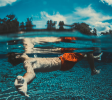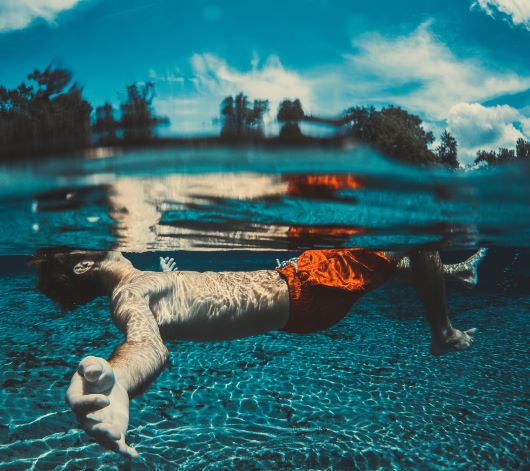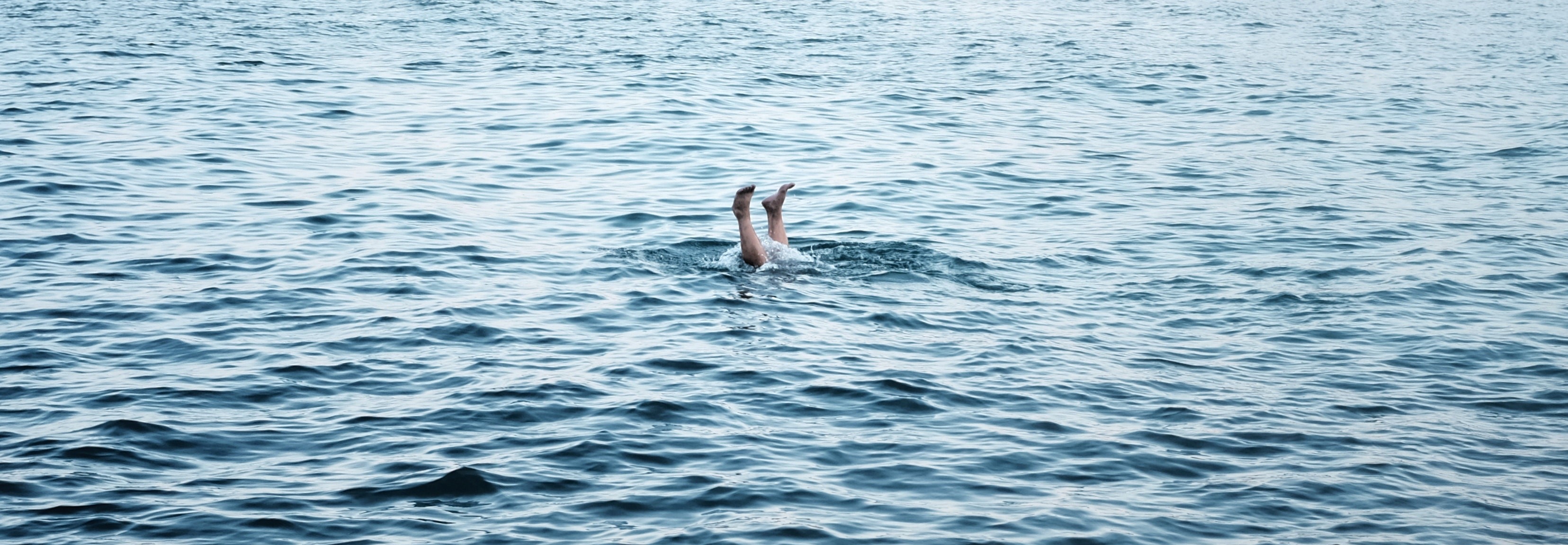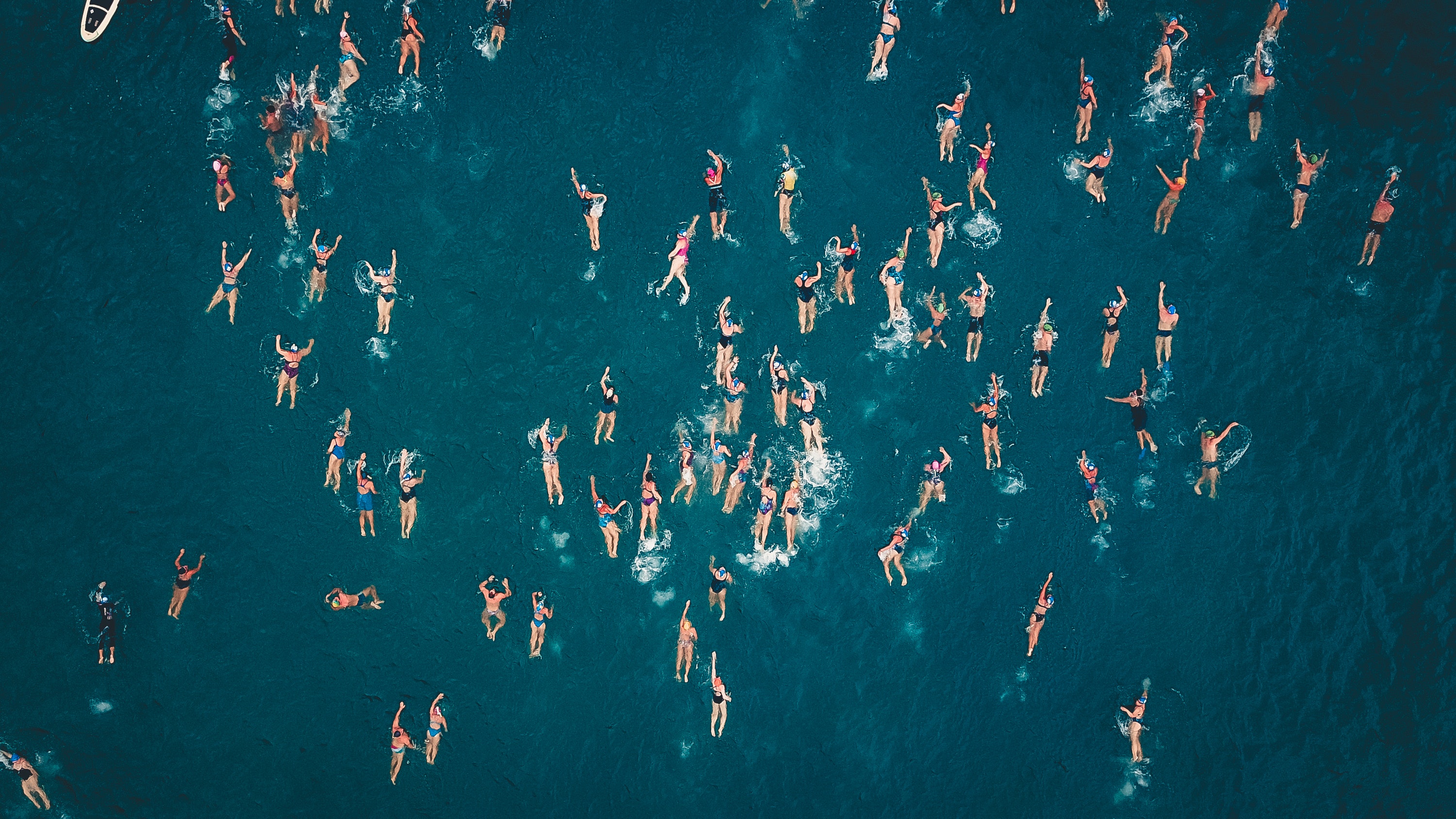AustLit
-
-
In recent years, swimming outdoors has emerged as a popular practice. Swimming in oceans, lakes, rivers, canals, ponds, dams, and other open bodies of water is different to swimming in chlorinated, symmetric pools. There are no lanes to direct movements, but instead there can be waves, currents, murkiness, animals, plants, rapids, rocks, and many other unknown obstacles or encounters. For outdoor swimmers – sometimes called wild swimmers – this uncertainty and risk is experienced as possibility and thrill; every swim is different, requiring the swimmers to be adaptable.
A growing body of international research emphasises how good swimming in outdoor, nature places is for our physical, mental, emotional and social health and wellbeing. This research includes diverse water places (including pools and ocean pools), and in all cases, it is the immersive, multisensory aspects of swimming that people focus on. Swimming at places that feel special to us can create important moments of connection between people, as well as non-human aspects like water, animals, plants, rocks, sand and weather, which are all part of the experience.
This kind of ‘wild’ swimming is easy to romanticise. Like the poets who wandered lonely as clouds, wild swimmers like to follow the water and see where they end up. It might be a knee-deep plunge, or it might be a miles-long navigation, but in each case, what could happen in the swim can’t be fully known.
Although there are competitive ocean and river swims, wild swimming is mostly a recreational leisure practice that can have deep meaning in swimmers’ lives. It can require skill, knowledge, competence and confidence, but it is not generally associated with elite sporting prowess. It can be a solo pursuit, such as in Roger Deakin’s ‘Waterlog’, but the many recreational and social ocean swimming groups along coastlines are evidence of the enthusiasm for wild swimming as a social activity.
The moniker itself – wild swimming – is certainly a romantic one, and as such contains all kinds of tensions. Most basically, swimming outdoors at the beach, in dams and other waterholes, is quite normal for many Australians (Cosslett). The term also suggests a remote or rural feeling or being in nature, far removed from urban and suburban landscapes. But many people are immersing themselves in the oceans, rivers and ponds that flow in their cities. The daily swimmers in Sydney and Melbourne are great evidence of this, as is the long-held affection and growing popularity of the Hampstead Heath ponds in London.
What swimming outdoors reminds us is that human lives and ‘nature’ are not separate.
In her 2017 New York Times essay, 'Forget Calories. Exercise for Awe', journalist Julia Baird described encounters with geographies, plants and animals during her daily ocean swim in Sydney, as 'a reminder of the vastness of the ocean and all it contains'. Baird highlights how her daily swims connect her with the place she lives in all its seasonal and climatic diversity: 'It’s not always sheer delight. Sometimes we emerge with red welts from stingers (usually jellyfish) across faces and limbs, and have to battle thickets of seaweed, powerful currents and crashing waves. But the daily difference in conditions is part of what makes it thrilling.' Living and swimming in Sydney, 'nature' for Baird is not a remote, distant wilderness, but is part of the urban landscape of the city she lives in. Like so many people in so many towns and cities, the ocean and coast is an extension of her everyday spaces.
‘The interaction between the sea and the swimmer resulted in changes in swimmers’ experience of themselves’ (Denton & Aranda, 2019, 5).
Swimming spaces are also well known for issues of access, tied up in tensions related to race, ethnicity and cultural histories, as well as sex/gender, sexuality, class and localism. Most significantly, in Australia, segregated beaches and pools were common, and swimming sites continue to act as sites of colonial encounter and exclusion by White settlers upon Aboriginal and Torres Strait Islander people. Beaches we swim at today are sites of historical atrocities. Politics of what women must and must not wear on beaches have played out since before Federation, culminating in the hostility towards Muslim women who veil for cultural and religious reasons. Such politics were part of the 2014 Cronulla riots in Sydney. Bodies of water are political places, and equitable access to all people is rarely ensured. For many people, swimming wild can be an act of resistance.
Clearly, ‘wild swimming’ is a colonial term, one associated with western philosophical traditions that separate humans from nature. The use of ‘wild’ elevates nature to be separate from everyday lives, societies and cultures. There is much critique of the idea of wilderness as untouched or little accessed by people. What the idea means, however, is untouched by White people. For Aboriginal and Torres Strait Islander peoples, and for many cultures around the world, human separateness from country, landscapes and ecologies is not part of their world view. There can be no ‘wild swimming’: only swimming.
With these important points in mind, we’ve flipped the romantic term here to Swimming Wild. We want to reflect the genre of writing about swimming outdoors, but to emphasise the politics that are just beneath the surface. ‘Swimming wild’ gives a sense of what writers are accessing when they write about swimming outdoors – a sense of multi-sensory immersion, of escape, of connection to themselves, to ecologies, to something bigger than themselves. And, sometimes, swimming in places with rules that prohibit them, as an act of rebellion and resistance. A recent example is in Melissa Lucashenko’s Too Much Lip. In her story, the Salter family’s individual and collective love of a particular section of river form an important part of their identities, ancestry, relationships, and futures; ‘The bend in the river was the most sacred place the Salters knew’ (30). For the Salters, swimming is a way of connecting to ancestors, to self, to country; it is an act of healing and of resistance.
In this collection, we explore the place of swimming in Australian literature. It will be an incomplete collection, as the everydayness of going swimming outdoors in Australia means that swimming often appears in ways incidental to many stories. We’re more interested in examples where swimming is key to the plot, to character development, or to how we can know the geography of where the story is taking place. There might be subjective slippage as a consequence of human interpretation – the work of Robert Drewe is an obvious inclusion, but Melissa Lucashenko’s use of swimming outlined above might be seen by some to be on the edge of the line – but in all cases, we have decided that without the inclusion of swimming, the key aspects of the narrative would be changed. By taking a generous approach to thinking about swimming as a practice, we hope to reveal the various ways that swimming wild has shaped Australian literature.
This collection is bound to be limited by the knowledge of the researchers working on it, so we welcome any suggestions for additions. Please feel free to contact Rebecca Olive via r.olive@uq.edu.au.
-
Dive In!
Swimming Wild is still in progress, but the link below will allow you to explore records currently affiliated with this dataset.
View all works in this dataset
or choose from the categories below
Novels Children's fiction Short Stories Autobiographies -
Project Lead: Dr Rebecca Olive
Rebecca Olive is an ARC DECRA Fellow in the School of Human Movement & Nutrition Sciences at The University of Queensland. Her DECRA project explores the role of recreational ocean sports (with a focus on ocean swimming and surfing) in how we develop knowledge and relationships with oceans and coasts. Her scholarship is published across cultural studies, gender studies, sport sociology, media studies, and education, and she has been a consistent contributor to mainstream and surf media. You can find more about her current project at movingoceans.com.
Research Assistant (Summer Semester, 2020): Louise Ryan
Louise Ryan is an undergraduate student at The University of Queensland studying a dual degree in Business Management and Arts with an extended major in Sport Studies. As a Summer Scholar, Louise is working as a research assistant to Rebecca Olive. In her role as research assistant, Louise is working to build and refine the dataset and source further information.
-
Baird, Julia. 'Forget Calories. Exercise for Awe'. New York Times, 6 May 2017. https://www.nytimes.com/2017/05/06/opinion/julia-baird-australia-sea-swimming.html
Cosslett, Rhiannon Lucy. '"Wild Swimming"? We Used to Just Call It Swimming'. Guardian, 29 January 2020. https://www.theguardian.com/commentisfree/2020/jan/29/swimming-wild-trend-social-media-cliche
Denton, Hannah, and Kay Aranda. 'The Well-being Benefits of Sea Swimming. Is It Time to Revisit the Sea Cure?' Qualitative Research in Sport, Exercise and Health, vol. 12, no. 5, 2020, pp.647-663.
Lucashenko, Melissa. Too Much Lip. St Lucia: University of Queensland Press, 2018.
All images and videos used are from websites offering works under Creative Commons licenses:
You might be interested in...







